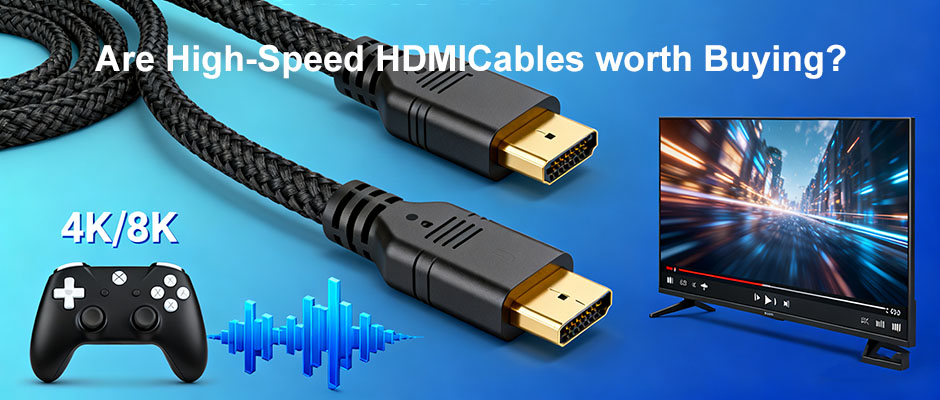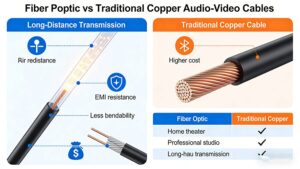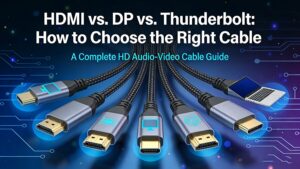You’ve probably stared at a shelf of Cables HDMI, wondering if splurging on “high-speed” is just a marketing trick. Spoiler: It depends on your gear—but for most modern setups, the answer is yes. Let’s cut through the jargon to explain why, when, and which ones matter.
First: What Is a High-Speed HDMI Cable?
Not all HDMI cables are equal. The key difference lies in bandwidth—how much data they can carry per second. This determines whether they can handle today’s (and tomorrow’s) ultra-high-def content.
Cables HDMI estándar max out at 4.95 Gbps, enough for old 720p/1080p TVs but nothing more . High-speed variants, however, start at 10.2 Gbps and scale up, unlocking crisp visuals and smooth performance your old cable can’t touch .
Do They Actually Make a Difference?
Yes—if you use devices that demand more bandwidth. Here’s when you’ll notice a night-and-day difference:
1. 4K/8K TVs & Monitors
Standard cables can’t transmit 4K resolution at all . Even “budget” high-speed cables handle 4K@30Hz, while premium versions push 4K@60Hz or 8K@60Hz . Without enough bandwidth, you’ll get blurry edges or laggy motion.
2. Gaming (Consoles/PC)
If you own a PS5, Xbox Series X/S, or a gaming PC with a 4K graphics card, high-speed cables are non-negotiable. They support:
3. Immersive Audio & HDR
High-speed cables carry advanced audio formats like Dolby TrueHD and support dynamic HDR (e.g., Dolby Vision), which makes bright scenes pop and dark scenes richer . Standard cables? They’ll stick you with basic stereo.
Standard vs. High-Speed: A Quick Comparison
| Característica | Standard HDMI Cable | High-Speed HDMI Cable | Ultra High-Speed HDMI Cable |
|---|---|---|---|
| Ancho de banda máximo | 4.95 Gbps | 10.2–18 Gbps | 48 Gbps |
| Resolution/Refresh | 1080p@60Hz | 4K@60Hz, 1080p@120Hz | 8K@60Hz, 4K@120Hz |
| Características principales | Basic audio/video | HDR, 3D, ARC | VRR, ALLM, eARC, 10K |
| Lo mejor para | Old TVs, DVD players | 4K TVs, Blu-ray players | 8K TVs, next-gen gaming |
When Not to Buy High-Speed
Pro Tips for Buying







